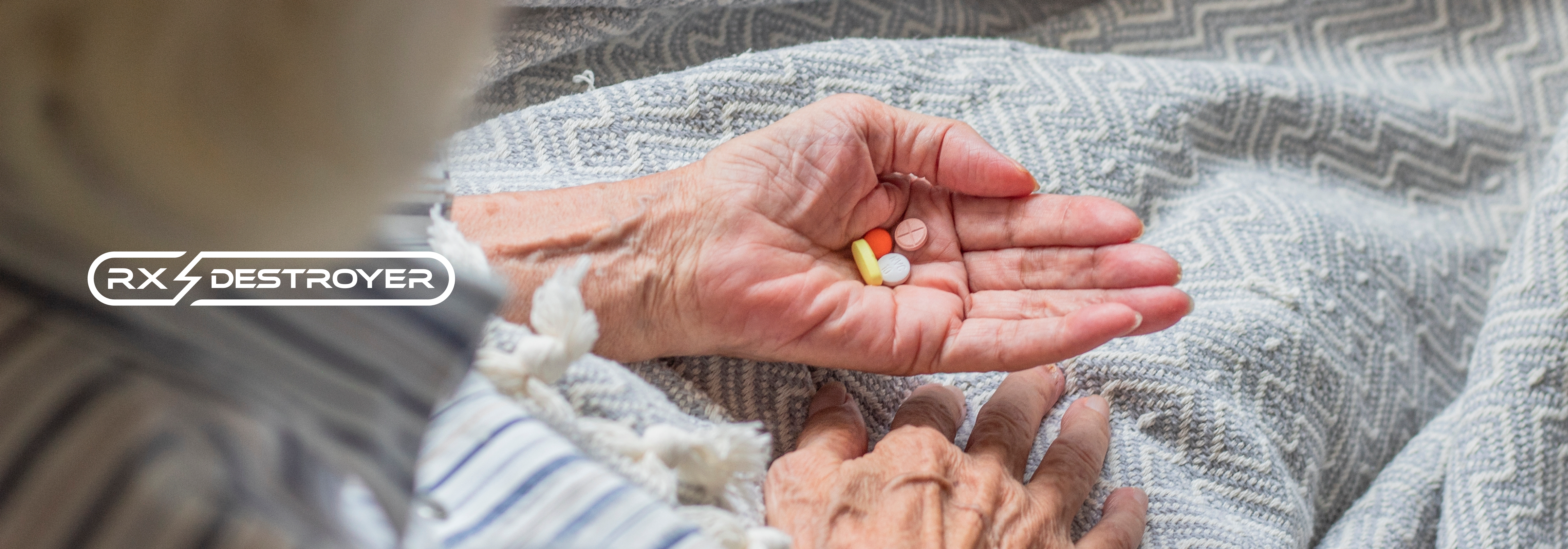Long Term Care Pharmaceutical Waste Disposal Options
February 5, 2024 | Pharmaceutical Waste Disposal

Long-term care facilities provide crucial care to a range of populations who are unable to live independently. Long-term care facilities may provide physical and medical care, often over periods of months to years. This care typically requires the administration of regulated pharmaceuticals.
When a patient no longer needs these pharmaceuticals, whether they’ve expired or unneeded, the facilities must dispose of them in a compliant manner. Often staff may find themselves challenged with disposing of significant quantities of unused and expired medications, requiring a convenient and stress-free disposal option like Rx Destroyer.
Medication Disposal Needs of Long Term Care Facilities
Long-term care facilities provide day-to-day care as well as on-call emergency medical care to residents often for years. These facilities take many different forms, from an individual’s home to a large-scale medical center, but what they typically have in common is a residential aspect and patient relationships that last for a significant period.
These facilities are likely most associated with their role in senior care, in which staff is often present 24/7 to provide for residents’ regular and emergency medical needs. In the course of this medical care, patients have reported receiving, on average, eight routine medications and an additional three unplanned medications every day. It is easy to see how this can add up to a lot of waste quickly when the distribution of these medications stops, or they expire before usage.
In fact, a study by The Pharmaceutical Research and Manufacturers of America found that an estimated 7-13 percent of prescription medications go unused by patients in long-term care facilities adding up to a combined 1.5 million pounds of pharmaceutical waste. This is a large amount of waste that needs to be dealt with, often on a daily basis as medication goes unused by residents.
Avoid Harmful Drug Disposal Methods
There have been many ways that facilities and individuals have traditionally used to dispose of unused medications, from flushing to mixing with undesirable substances such as coffee grounds and even kitty litter. The DEA and EPA have made it clear however that these methods are no longer acceptable.
One significant area of concern is the fact that even when mixed with undesirable substances, controlled pharmaceuticals may still be retrievable, posing a threat of misuse. This puts the residents and professionals in the facility at risk. In addition, it is important to consider the potential damage that these inappropriate methods of disposal can have on the environment.
Sewering unused medications places these drugs into waste waters which treatment plants are not designed to remove. From there they will eventually find their way into the environment and watershed. Similarly, placing these drugs into the trash risks the potential for these drugs to leach out into the surrounding environment.
Implications for Improper Disposal
The DEA has indicated that these methods are unlikely to meet its standard for rendering a controlled substance unable to be retrieved. This standard requires facilities to make these drugs irreversibly “unavailable and unusable for all practical purposes,” something coffee grounds, cat litter or other DIY substances simply cannot accomplish. In addition, the EPA, in 2019, released a final rule which addressed the risks of sewering pharmaceuticals. This new rule forbids the sewering of hazardous pharmaceuticals and recommends avoiding this procedure for any medication.
Improper disposal of drugs is a serious issue not just because of the harm it can cause if an individual were to gain access to these medications but also due to the repercussions long-term care facilities can face. Under the Resource Conservation and Recovery Act (RCRA), facilities may face up thefty fines for polluting waterways, and this is only the tip of the iceberg as far as federal liability is concerned.
In recent years a new method of disposal has made it fast and simple for long-term care facilities to remain in compliance with proper pharmaceutical disposal. Rx Destroyer allows caretakers to simply place unwanted medication in a container with a deactivating agent to render drugs irretrievable and inert.
How Rx Destroyer Can Help
Rx Destroyer is a safe, environmentally friendly, and easy to use product that allows long term care facilities to safely get rid of unwanted medications. Rx Destroyer renders pharmaceuticals irretrievable, using a method called chemical digestion. You can even add Rx Destroyer to medication carts for under or low staffed facilities to make it easier for proper disposal practices.
Chemical Digestion meets the DEA’s non-retrievability standards. Long term care staff can simply add unwanted medications into Rx Destroyer and continue to use until full for up to a year. Simple, time-efficient usage means disposing of medications does not have to be a cumbersome part of staff members’ workflows.
Key Takeaway for Long Term Care Facilities Disposing of Pharmaceutical
Long term care facilities help serve their residents by assisting in administering a great number of medications. The need to safely dispose of unwanted or expired medications goes hand in hand with this. Navigating applicable laws on safe disposal and preventing potential abuse by staff or residents is crucial to providing the best possible care, your facility’s patients and staff demand a reliable, accessible, and compliant solution. Rx Destroyer offers the simplest yet most effective way to remove unwanted drugs from your long term care facility.

